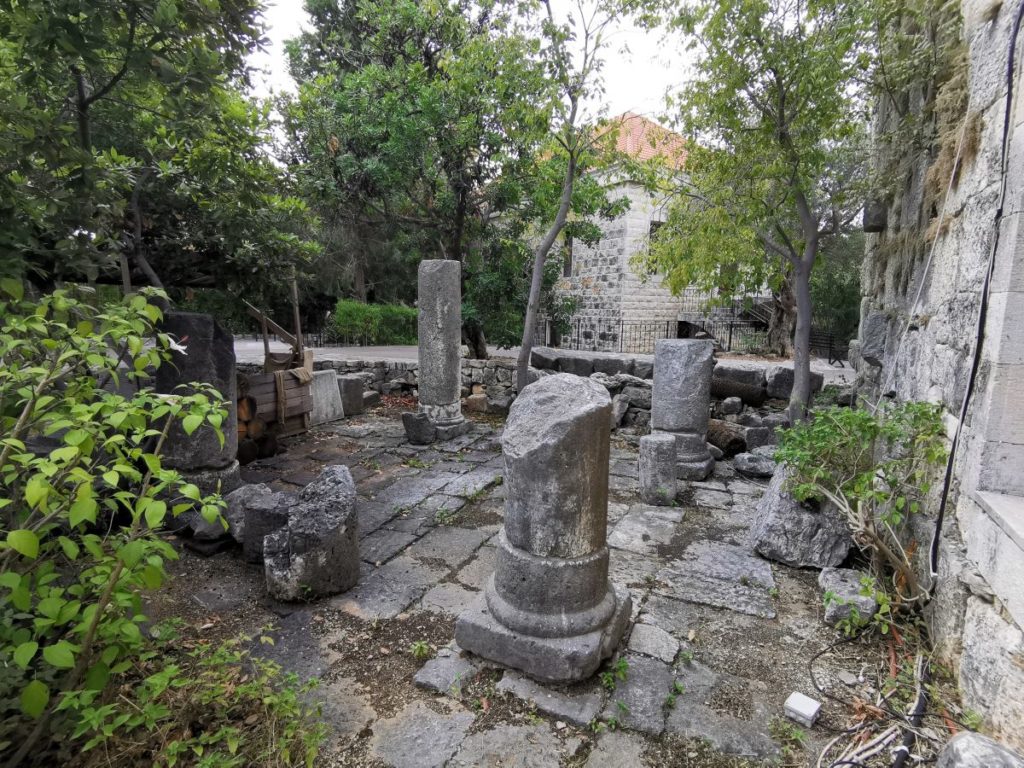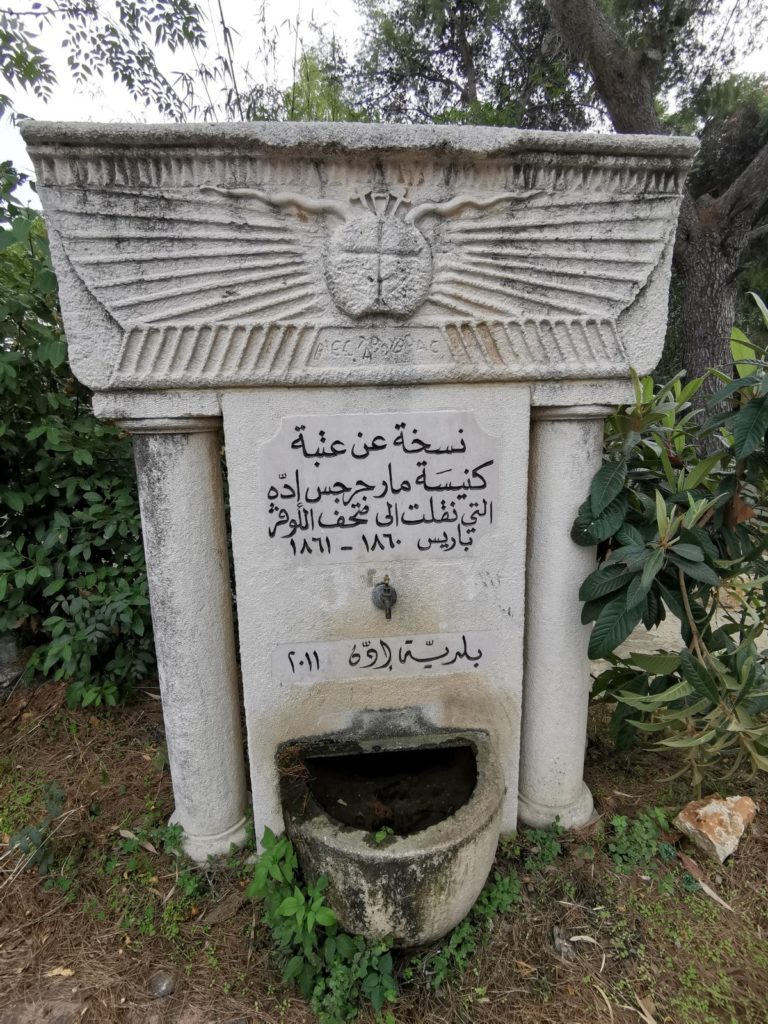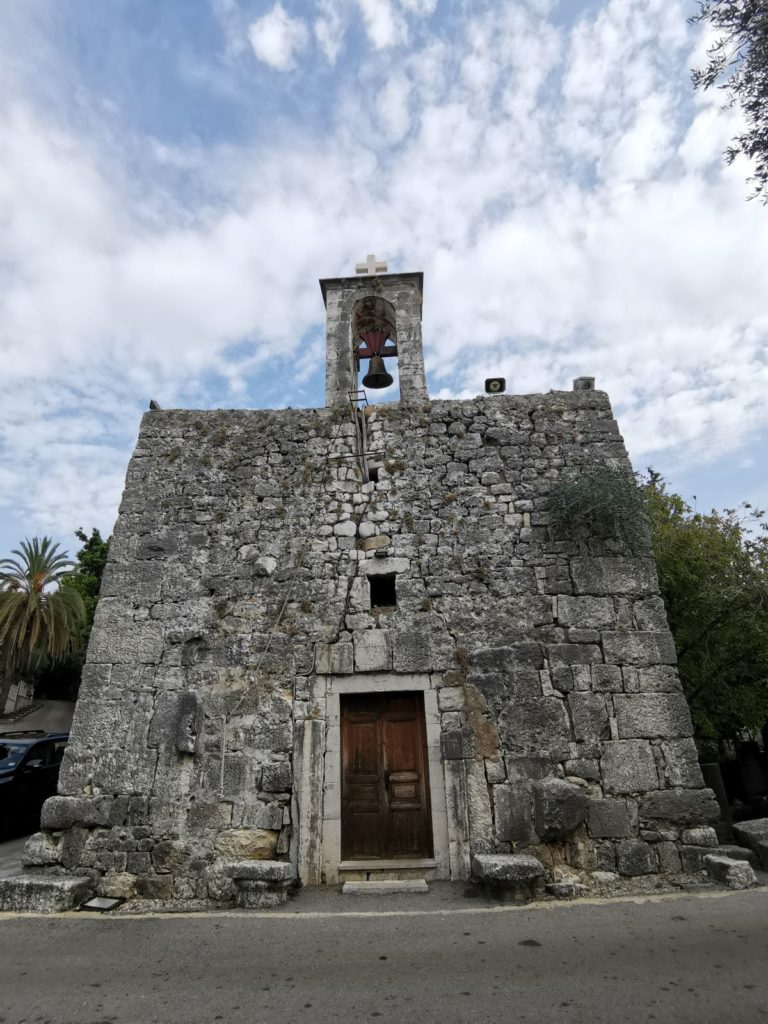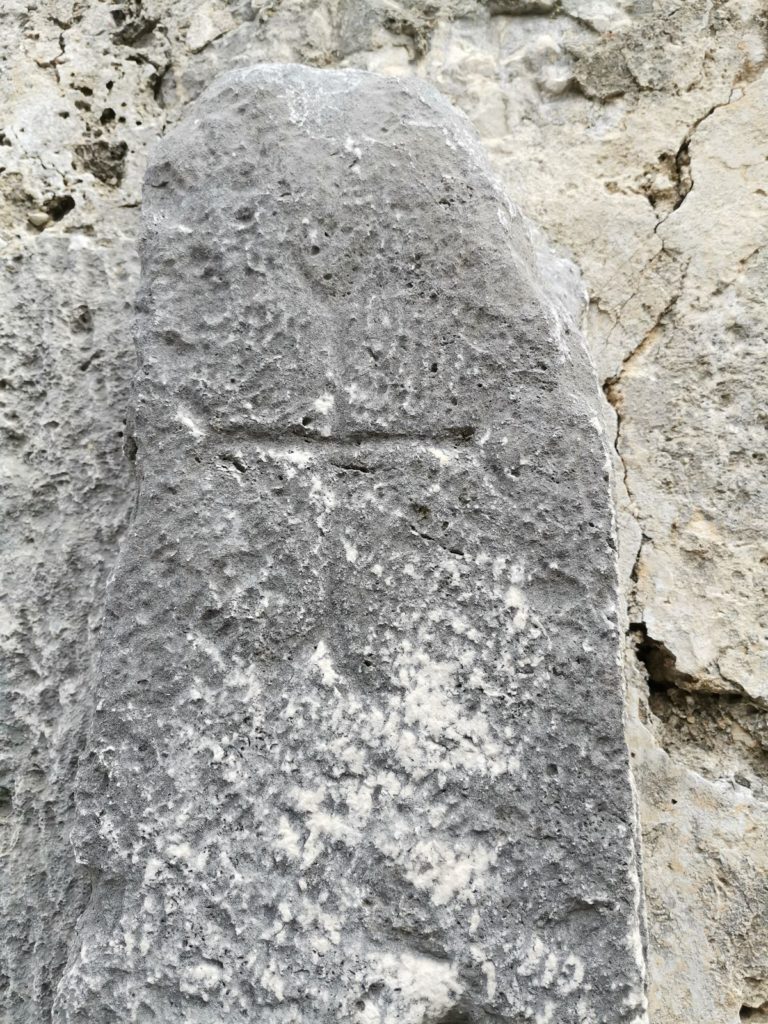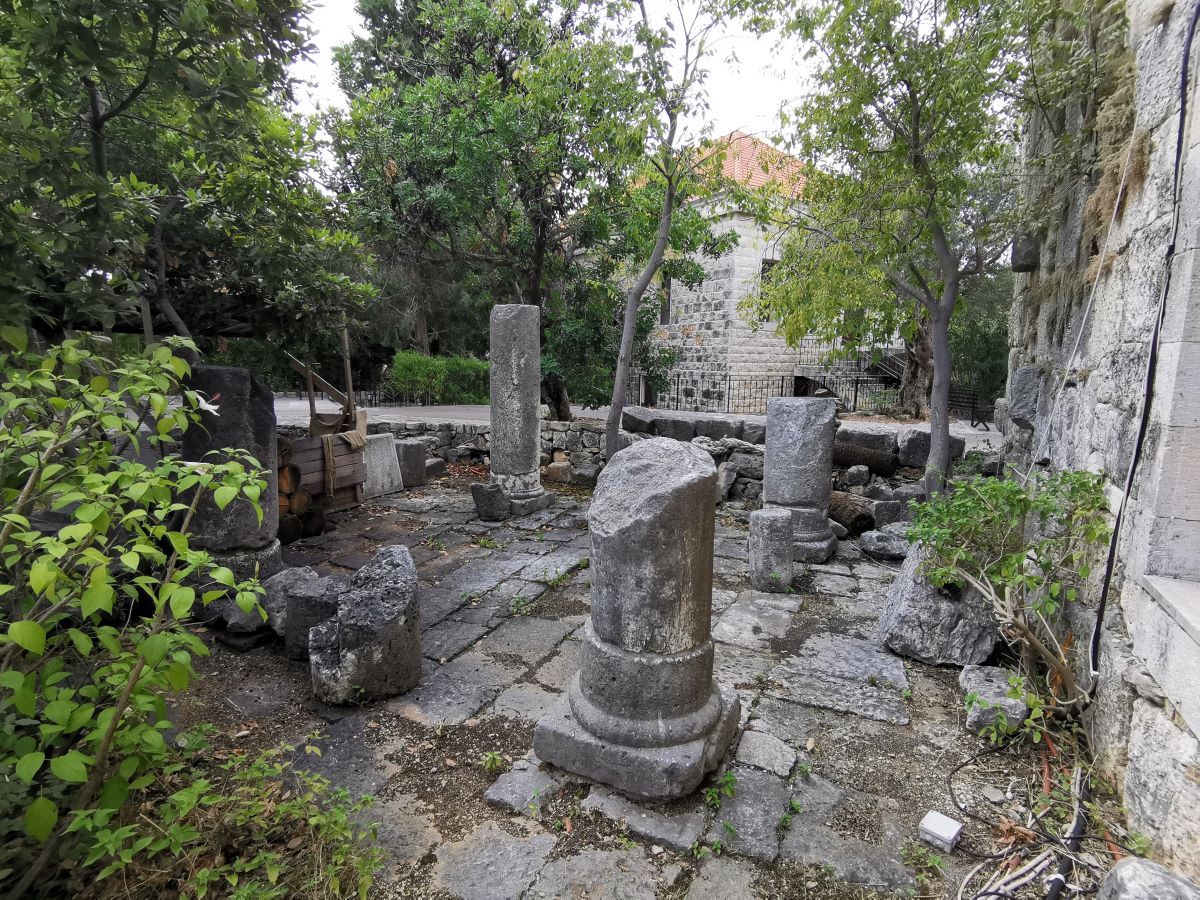The Church of St. George, located in Edde, was built during the Byzantine era by using blocks of a former Roman temple, which the deity and the location are still unknown.
Structure
The St. George church is rectangular in shape (18x9m), and can be accessed through three side doors: to the north, west and south, which lead to a single nave centered by an apse, and surrounded by two other apses.
The church was enlarged in the Middle Ages by the Crusaders who consolidated the facades by inserting fragments of columns in the north and south walls, and added arrowslit openings (windows for archery)
Above the northern door, one can see the crusader cross engraved on a block of stone emerging out form the façade.
Missing Lintel
Ernest Renan, who led an archaeological expedition to Lebanon during the 19th century, unsealed the lintel of the church and sent it to the Louvre museum in France. The lintel is adorned with a winged solar disc, and it dates from the Persian period or the Hellenistic period and bears a Greek proto-byzantine inscription.
The municipality of Edde had a remake of the missing lintel and installed it at the Southern side of the church (check the picture below)
Anchorites Column
At the southern side of the church, one can see fragments of columns of the former Roman temple. One of the columns bears a graffiti that depicts bicorn crosses, symbols of the Anchorites (Hermit).
Importance
This attraction presents how a pagan temple was transformed into a Christian church through alternation of the architectural plan of the building, and the blend of the structural elements, and decoration.
Karim Sokhn
Tour Operator & Tour Guide
References:
Les Sentiers de la Foi, Mariam G. Matta
La Vie Religieuse Au Liban Sous L’Empire Romain – Julien Aliquo
